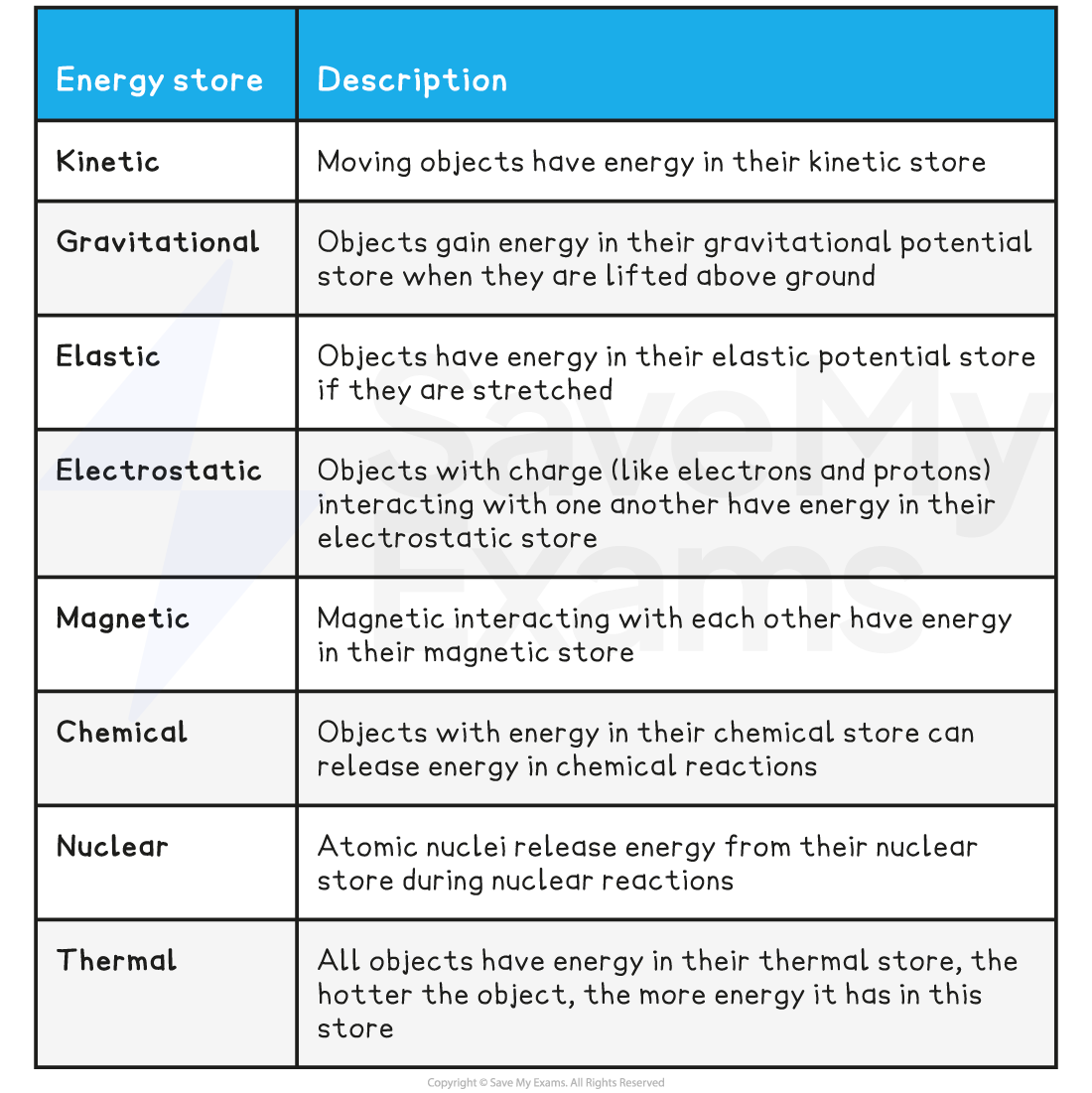Conservation of Energy (Edexcel GCSE Physics): Revision Note
Exam code: 1PH0
Closed Systems
In physics, a system is defined as:
An object or group of objects
Defining a system in physics is a way of narrowing the parameters to focus only on what is relevant to the situation being observed
When a system is in equilibrium, nothing changes and so nothing happens
When there is a change in a system, energy is transferred
An apple sitting on a table can be defined as a system
If nothing changes, the apple will just sit there
If the table is removed, the apple will fall
As the apple falls, energy is transferred

A change in a system causes a transfer of energy from the apple's gravitational potential store to its kinetic store
Energy is measured in units of joules (J)
A closed system is defined as:
A system where there is no net change to the total energy in that system
As a result, the total amount of energy within that system must remain constant
This is due to the conservation of energy
Did this video help you?
Conservation of Energy
The principle of conservation of energy states that:
Energy cannot be created or destroyed, it can only be transferred from one store to another
This means the total amount of energy in a closed system remains constant
The total energy transferred into a system must be equal to the total energy transferred out of the system
Therefore, energy is never 'lost' but it can be transferred to the surroundings
Energy can be dissipated (spread out) to the surroundings by heating and radiation
Dissipated energy transfers are often not useful, and can then be described as wasted energy
Energy Stores
Energy is stored in objects in different energy stores
Energy Stores Table

Energy Transfer Pathways
Energy is transferred between stores via transfer pathways
Examples of these are:
Mechanically
Electrically
By heating
By radiation
These are described in the table below:
Energy Transfer Pathway Table

An example of an energy transfer is a hot coffee heating cold hands

Energy is transferred by heating from the hot coffee to the mug to the cold hands
Representing Energy Transfers
Energy Flow Diagrams
Energy stores and transfers can be represented using a flow diagram
This shows both the stores and the transfers taking place within a system

Energy flow diagram showing energy stores and transfers in a nuclear power plant.
Note the colour difference of the labels (stores) and the arrows (transfer pathways)
Sankey Diagrams
Sankey diagrams can be used to represent energy transfers
Sankey diagrams are characterised by the splitting arrows that show the proportions of the energy transfers taking place
The different parts of the arrow in a Sankey diagram represent the different energy transfers:
The left-hand side of the arrow (the flat end) represents the energy transferred into the system
The straight arrow pointing to the right represents the energy that ends up in the desired store; this is the useful energy output
The arrows that bend away represent the wasted energy

Total energy in, wasted energy and useful energy out shown on a Sankey diagram
The width of each arrow is proportional to the amount of energy being transferred
As a result of the conversation of energy:
Total energy in = Useful energy out + Wasted energy
A Sankey diagram for a modern efficient light bulb will look very different from that for an old filament light bulb
A more efficient light bulb has less wasted energy
This is shown by the smaller arrow downwards representing the heat energy

Sankey diagram for modern vs. old filament light bulb
Worked Example
An electric motor is used to lift a weight. The diagram represents the energy transfers in the system.

Calculate the amount of wasted energy.
Answer:
Step 1: State the conservation of energy
Energy cannot be created or destroyed, it can only be transferred from one store to another
This means that:
Total energy in = Useful energy out + Wasted energy
Step 2: Rearrange the equation for the wasted energy
Wasted energy = Total energy in – Useful energy out
Step 3: Substitute the values from the diagram
500 – 120 = 380 J

Unlock more, it's free!
Did this page help you?